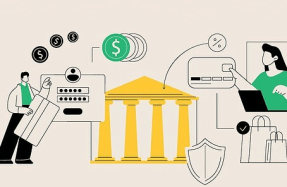
Hau L. Lee, a Stanford professor described high performing supply chains back in 2004 as Agile, Adaptative and Aligned. Agile refers to the ability of supply chains to face daily uncertainties and variations, adaptability refers to the ability to adjust to more significant changes over time; and aligned refers to the quality of the relationships with partners along the chain that contribute to delivering sustainable performance. While the triple A framework is as relevant as ever for supply chain leaders, in this article we put forward the concept of Triple A.I. supply chains as Agile, Adaptative and Aligned needs to be complemented by Informed, Interconnected and Intelligent supply chains. In a nutshell, this means that information gathered along and beyond the supply chain are combined into short, mid, and long-term insights and scenarios that facilitate human decisions (see figure 1).
Decision-making within the supply chain needs to address different time horizons. First, within a short-term time lens, a supply chain needs to be agile and informed, allowing all teams to orchestrate the supply chain in real time. Acting as an effective control tower impacts on quality, cost and delivery performance while ensuring a positive P&L impact. Second, within a mid-term time lens, a supply chain needs to be aligned and interconnected allowing all teams to strengthen supplier and customer relationships and to optimise end-to-end flows. In terms of performance this contributes to achieving customer centricity and delivering on the corporate strategy goals. Finally, taking a long-term time lens, supply chains need to be adaptable and intelligent. They mobilise a broad ecosystem of partners that can collectively address any challenge or seize any opportunities based on facts. Being future-ready creates strategic resilience and generates inclusive performance well beyond operational and financial results. This contributes to delivering on the broader goals that matter to all external stakeholders, such as social and environmental impacts.

Information gathered along and beyond the supply chain are combined into short, mid, and long-term insights and scenarios that facilitate human decisions
We start by describing what Informed, Interconnected and Intelligent supply chains are. Then, we will look at four key stages of implementation for triple A.I supply chains. The last stage describes how Chief Supply Chain Officers can assemble all the pieces of this strategic jigsaw puzzle together.
INFORMED SUPPLY CHAINS
Supply chain teams face complex and dynamic environments that require aggregating reliable information. Some of them are internal sources of information accessible in existing systems, others are external sources of information such as alerts on weather issues, strikes or geopolitical issues. To support decision-making, multiple sources of information are combined. Providing access to all existing information available creates






